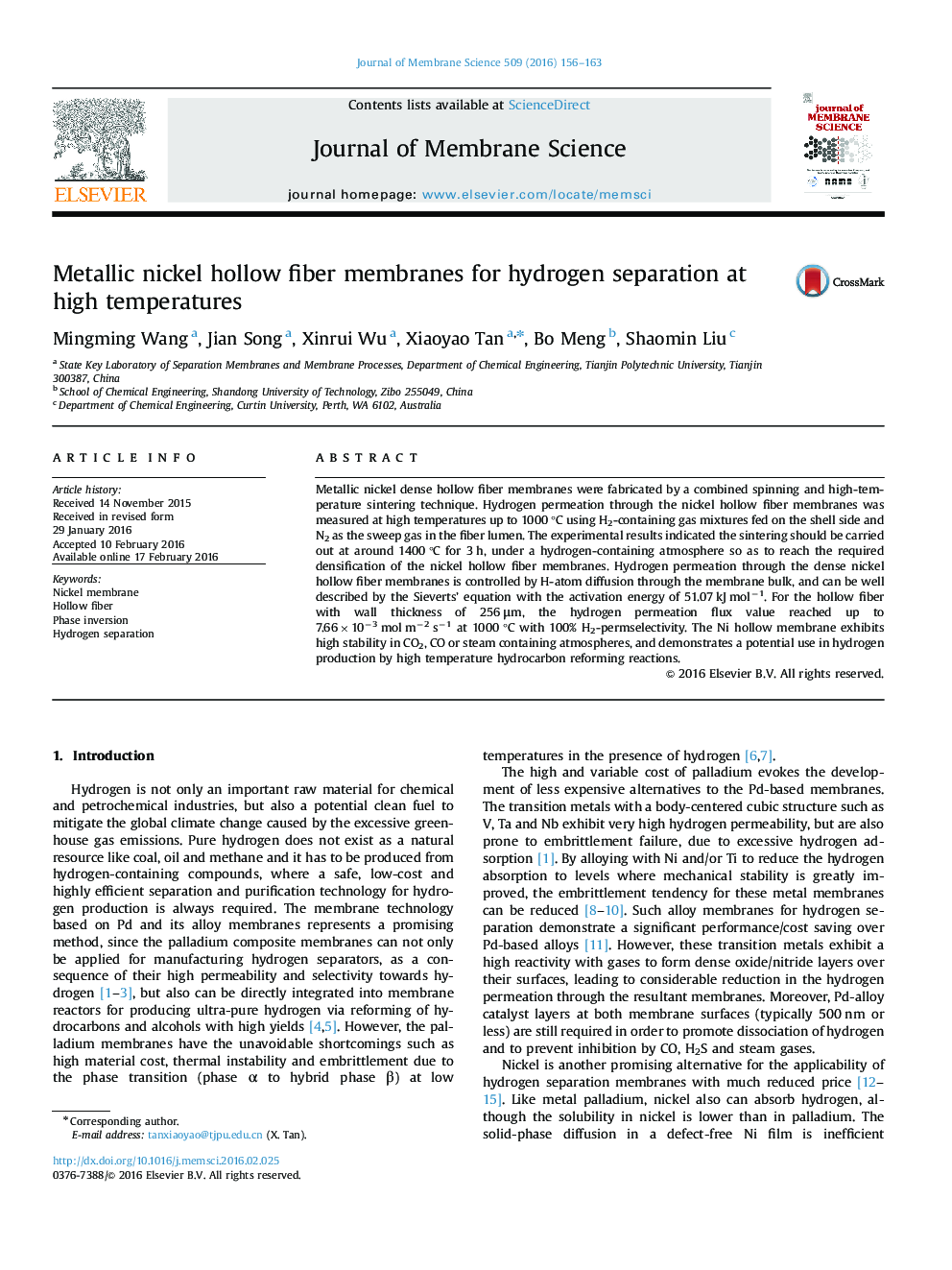| Article ID | Journal | Published Year | Pages | File Type |
|---|---|---|---|---|
| 632442 | Journal of Membrane Science | 2016 | 8 Pages |
•Metallic Ni dense hollow fiber membranes are fabricated by a phase-inversion technique.•Hydrogen permeation through Ni hollow fiber membranes is firstly demonstrated.•The hydrogen flux through the Ni hollow fiber reaches 7.66×10−3 mol m−2 s−1 at 1000 °C.•The Ni hollow fibers exhibit high stability in CO2, CO and steam-containing atmospheres.
Metallic nickel dense hollow fiber membranes were fabricated by a combined spinning and high-temperature sintering technique. Hydrogen permeation through the nickel hollow fiber membranes was measured at high temperatures up to 1000 °C using H2-containing gas mixtures fed on the shell side and N2 as the sweep gas in the fiber lumen. The experimental results indicated the sintering should be carried out at around 1400 °C for 3 h, under a hydrogen-containing atmosphere so as to reach the required densification of the nickel hollow fiber membranes. Hydrogen permeation through the dense nickel hollow fiber membranes is controlled by H-atom diffusion through the membrane bulk, and can be well described by the Sieverts’ equation with the activation energy of 51.07 kJ mol−1. For the hollow fiber with wall thickness of 256 μm, the hydrogen permeation flux value reached up to 7.66×10−3 mol m−2 s−1 at 1000 °C with 100% H2-permselectivity. The Ni hollow membrane exhibits high stability in CO2, CO or steam containing atmospheres, and demonstrates a potential use in hydrogen production by high temperature hydrocarbon reforming reactions.
